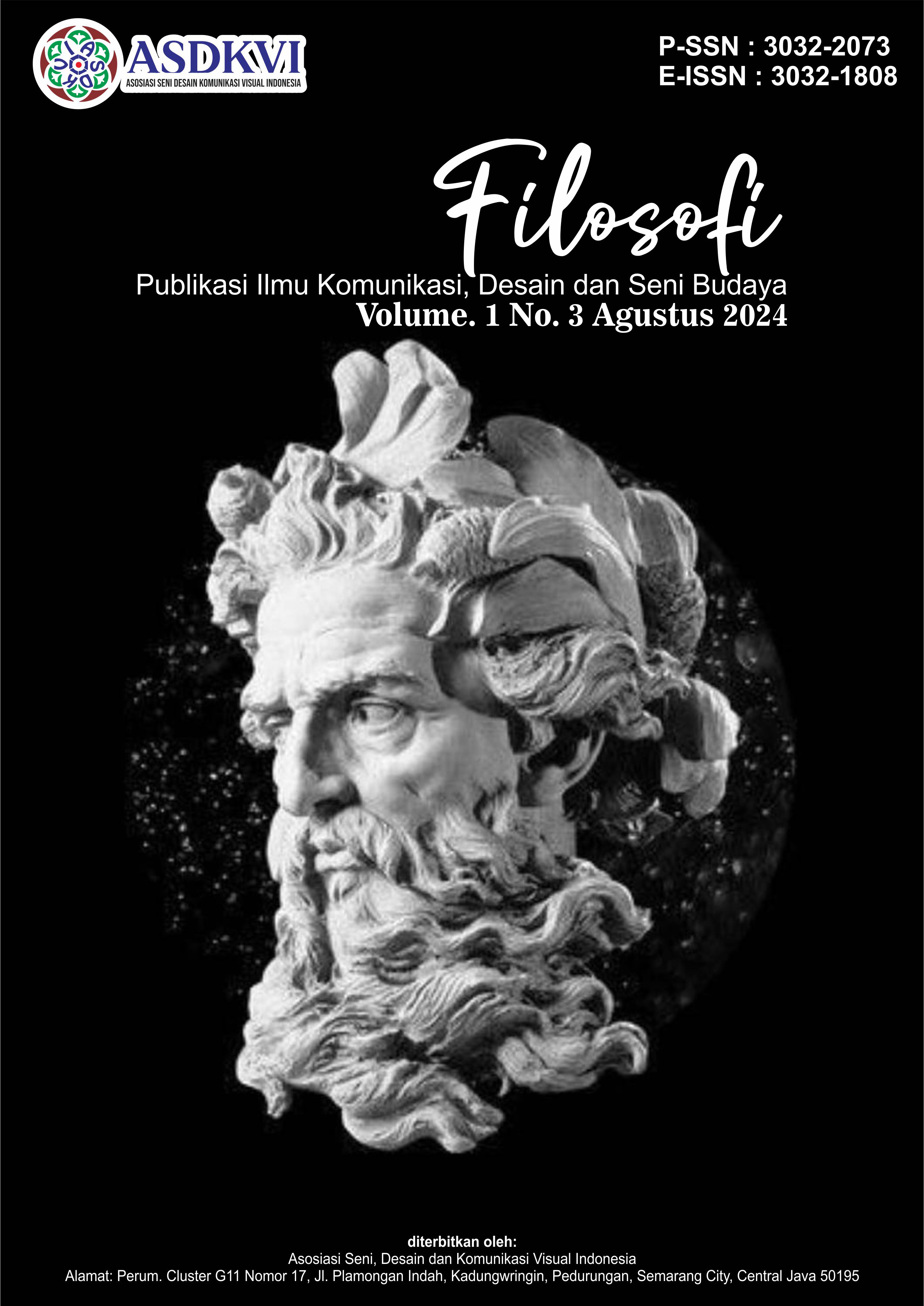Analisis Isi Eksploitasi Dan Penistaan Agama Dalam Poster Film Kiblat
Content Analysis Of Exploitation And Blasphemy In Kiblat Movie Posters
DOI:
https://doi.org/10.62383/filosofi.v1i3.128Keywords:
Film, Islamic Law, MUIAbstract
Film is a part of mass media communication is audio-visual and aims to convey a certain social or moral message to the audience. The method used in this study is a descriptive qualitative method using literature. The Film” KIBLAT " released its poster on March 21, 2024. The Poster became controversial because it was considered to contain content that was not in accordance with Islamic law. MUI considered that the film was not in accordance with Islamic law and had the potential to mislead the people. The Indonesian Ulema Council issued a letter of Appeal Number 01/MUI/II/2024 dated March 23, 2023 prohibiting the screening of the film “KIBLAT” is also not allowed.
References
Alfathoni, M.A.M. dan Manesah Dani. (2020). Pengantar Teori Film. Yogyakarta: CV Budi Utama.
Ardianto, E. (2007). Komunikasi Massa Suatu Pengantar. Bandung: Simbiosa Rekatama Media.
Badudu, J.S. dan Sutan Muhammad Zein. (2001). Kamus Umum Bahasa Indonesia. Jakarta: Pustaka Sinar Harapan
Baran, S.J. (2012). Pengantar Komunikasi Massa Literasi Media dan Budaya (terjemahan). Jakarta: Salemba Humanika.
Hennink, M., Hutter, I., & Bailey, A. (2020). Qualitative research methods. Sage Pub
Joseph, Dolfi. (2011). Pusat Apresiasi Film. Yogyakarta: E-journal Universitas Atma Jaya Yogyakarta.
Koentjaraningrat. (1984). Kebudayaan Jawa. Jakarta : Balai Pustaka.
Limantoro, San. (2013). Analisis Kemiripan Tanda Visual Poster Film Horor Indonesia Terhadap Poster Film Luar Negeri. Tanggerang: Universitas Multimedia Nusantara.
Sugiyono. (2011). Metedologi penelitian kuantitatif kualitatif dan R&B. Alfabeta
Walidin, W., Saifullah & Tabrani. (2015). Metode penelitian kualitatif & grounded theory. FTK Ar-Raniry Press.
Downloads
Published
How to Cite
Issue
Section
License
Copyright (c) 2024 Filosofi : Publikasi Ilmu Komunikasi, Desain, Seni Budaya

This work is licensed under a Creative Commons Attribution-ShareAlike 4.0 International License.





